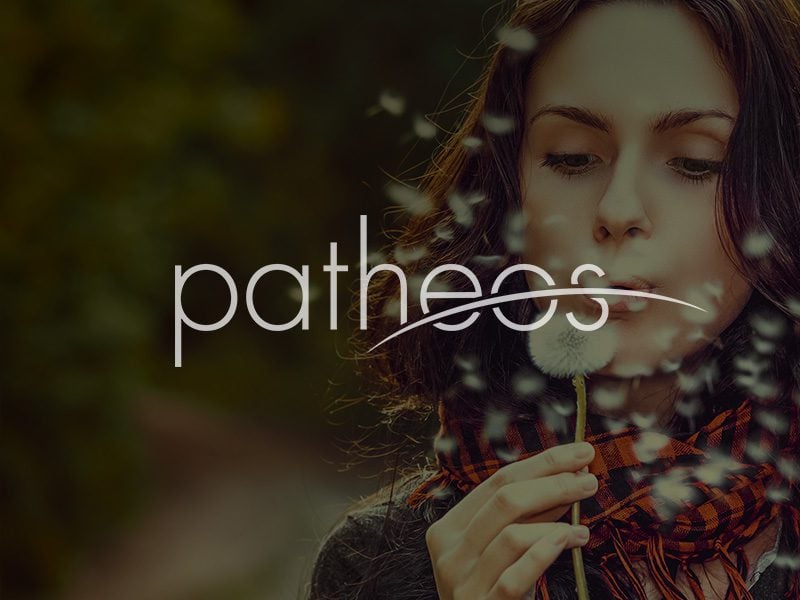For a few years I’ve been doing this thing where I assign themes to each week, going in roughly chronological order through my life and praying a decade of the day’s rosary for that theme (for the people associated with that time in my life, etc). I also try to match up some of what I’m reading and watching with the theme, with part of the pleasure, of course, coming from stretching the idea of “fitting the theme.” This whole practice has been great, honestly. It’s been fun and it’s also helped me reflect on various times in my life (I was an absolute monster the year I became Catholic!!! good grief) and bring some painful times or relationships to God. It’s also been a chance to use a “reading plan” to go deeper, exploring more in areas I already cared about, rather than wider. A++ would recommend.
It’s also meant that I’ve spent a lot more time rereading and rewatching, in the past few years, than in the decade or so before that. I got used to keeping revisitations out of my year’s-best roundup, and I do like keeping the year’s-best for new discoveries the year brought me. But that means there’s no obvious place to round up the best stuff I revisited or rediscovered in the past year. That is what this post is for!
The first thing I revisited in 2020 was The Baby and you know what, I should have known then and there what this year would be. The Baby is still a very great, very disturbing, very ’70s tale of three women in clashing glamour fashion who keep an adult man as a baby. Recommended for the kind of people who read that description and think, “Whoa, okay, I’m down.”
A quick list of disappointments: Henry Reed’s Journey, now mostly notable for the endearing Robert McCloskey line drawings; I’d remembered How Much for Just the Planet? as hilarious but it’s mostly reference humor and unconvincing set-piece scenes; I sort of expected The Fisher King to disappoint me and it did, less fantastic and more magical-homeless-man than it thinks it is. It’s likely my own fault but I still just don’t get, almost thirty years later, Derek Jarman’s Wittgenstein. Again I knew Snakes on a Plane would probably not hold up but it is really quite bad. When I saw it in the theater, people clapped at the end!
The Great Gatsby is haunting and crystalline and also more politically perceptive than I remembered. Twelve Steps and Twelve Traditions extremely does what it says on the tin so thanks be to God for that. Harry and the Hendersons was more clunky and bickery than I wanted but retained a sweetness and an occasional strangeness.
The Witches of Worm is the rare “magic or just imagination???” tale where the ambiguity doesn’t irritate me. It’s a suspenseful story of an unhappy girl and her possibly-possessed cat, and unlike most books for this age group, it allows the girl to do and contemplate some really awful things. Strongly recommended especially if your copy has the Alton Raible illustrations.
The Ghost Belonged to Me is good but there’s a servant subplot so memorably awful that I ended up making fun of it in the novel draft I was writing. There’s an article to be written about servants in children’s fantasy (Philip Pullman: all the servants have dog spirits Me: ??? Pullman: because they’re so uhhh loyal Me: *stares, laughs in Christian*) but I couldn’t quite get it together, I’m afraid.
The Headless Cupid is wonderful, a believable portrait of an unhappily “blended family” learning to live together. A mystery, and yet another “maybe the magic is just in your head???” story which still manages to feel haunting rather than mundane. The Egypt Game is superb.
Bugsy isn’t good but Annette Bening is hot and that goes a long way.
The Last Days of Disco is still my second-favorite Stillman (after Damsels) and I don’t have much to add to what I said here. Manhunter is still very good to look at, because it is a Michael Mann joint and it Michael Manns with main and might. Thief is probably a better film but Manhunter is an extremely satisfying rewatch if rewatching serial-killer flicks is already a thing you do.
The Last Unicorn is, like the sea, always good. Always so beautiful and scary and weird; and, not for nothing, so unconcerned with the usual children’s-movie resolutions of romance for all, the nuclear family, and the restored comfort of the bourgeois hearth.
My Enemy, My Ally is a top-tier Star Trek tie-in novel but not as terrific as The Romulan Way. Star Trek IV: The Voyage Home is still the fun one. Tapeheads is still a joy. Beetlejuice is just enough Tim Burton and not too much, and also handles the titular character’s crassness much better than I’d feared. Beetlejuice gropes Lydia but the camera and script don’t, if you see what I mean. Pump Up the Volume is dumb, it’s very “cussing and saying sex stuff will liberate us!!!”, it’s the dumbest version of the ’90s, I still enjoyed it quite a bit and found the closing audio montage of teen radio genuinely moving. That was the zine world, you know, that was real.
My Own Private Idaho never quite escaped the sentimentality of its tragic-hustler tale, and never quite made that fable illuminate the Shakespearean text. But I didn’t care that much, because who else would even try to do this? A must-watch if you’re interested in what it’s trying to do. The Addams Family was fun and had a surprisingly smart sense of when to be edgy and when to be sweet. Most films of that kind eventually slide into either cloying sentiment or dislikable unkindness. Not Gomez and Morticia!
“What game?”
“It’s called, ‘Is there a God?'”
Ladies and Gentlemen, The Fabulous Stains! is a perfect movie. Mi Vida Loca is not perfect, it feels less revolutionary now than it did then, but it’s still a touching meander through a world of hot colors. Borges’s Ficciones was colder than I remembered, and I found that I wanted more honest emotion in my cerebral games, more anguish and longing, isn’t that what labyrinths and libraries are for? I liked As I Lay Dying a lot more this time around: I personally care about apocalypse now, I’ve spent more time thinking about how children try to understand distorted and violent family dynamics, and I have more appreciation for a passage about how hard it is to afford a pie or the way a horse looks coming down a hill.
“Goblin Market” is still the only Christina Rossetti I really love. Homicide: A Year on the Killing Streets shows more of its swooning surrender to the police worldview, on rereading, but that makes its exposure of the contempt cancering along that worldview all the more persuasive because unintentional. The prose is still chewily noir and the moments of greatness still so well-observed. Definitely recommended if you’re interested in life and death on the crest of the last crime wave.
The Bacchae is always scary. The Chimes at Midnight is always enrapturing. The Usual Suspects is ok I guess. The Queen is fantastic and ridiculously suspenseful for a movie where the big events include “a flag is not there” and “a flag is placed there, then lowered.” Also this time I listened to the director’s commentary and Stephen Frears really tried to make a scathing satire of the monarchy! I love it when people try to do scathing satires and end up in apologia.
Grosse Pointe Blank is iconic, one of the best examples of the Gen X “did u know….. morality is real?” genre. Airplane! is still funny. The Art and Craft of Feature Writing is still the single best book on any kind of writing that I’ve ever read, sorry to Stephen King but you got beat by the Wall Street Journal. You don’t need me to tell you that Die Hard is good.
Shattered Glass is still lowkey terrifying. If I had a car, and I had a bumper sticker on that car, that bumper sticker would say VISUALIZE GETTING CAUGHT.
Tough Jews: Fathers, Sons, And Gangster Dreams is a strange book which bears the marks of its 1998 publication date. This book about the reality and fantasy of the Jewish American gangster basically thinks violence is cool, obviously I personally would not murder a man, I get good grades, but powerlessness is bad and therefore violence is cool. Nobody wants to be a Holocaust victim; everybody wants to be Ben Siegel. This opinion is expressed at length (it’s a repetitive book, especially on this subject) and if you think that calling the Israeli army an army of occupation in the first chapter foreshadows any moral reflection or self-criticism later you shoulda asked before you bought. An occupying power is an occupying power, baby.
My basic feeling is that I am always down for that ’90s amorality as long as you don’t then try to moralize about it. Don’t defend it! The book inevitably dehumanizes the noncriminal victims, most notably when it treats the rape of a gangster’s girlfriend exactly the way the rapists did, as an assault on him not her. AND ANOTHER THING why can’t this book have either a chronological or a clear thematic structure? It just wanders. MUCH LIKE THE JEWISH PEO—-
(gunshots from a speeding car, I am mercifully silenced)
I actually enjoyed this book more than I’m making it sound, mostly because it does capture the same style of Jewish masculinity that I talked about in my old Ravelstein review (not in the gangsters themselves but in their fans). But it could use less posturing and more thinking.
And so we sail into 2k21! If all goes well my next re-read will be Ellen Conford’s The Alfred G. Graebner Memorial High School Handbook of Rules and Regulations, for which I’m ridiculously excited. Good luck out there… do not fold, spindle, or mutilate.
San Juan Capistrano awaiting the swallows via Wikimedia Commons. Post title via the Mountain Goats.












